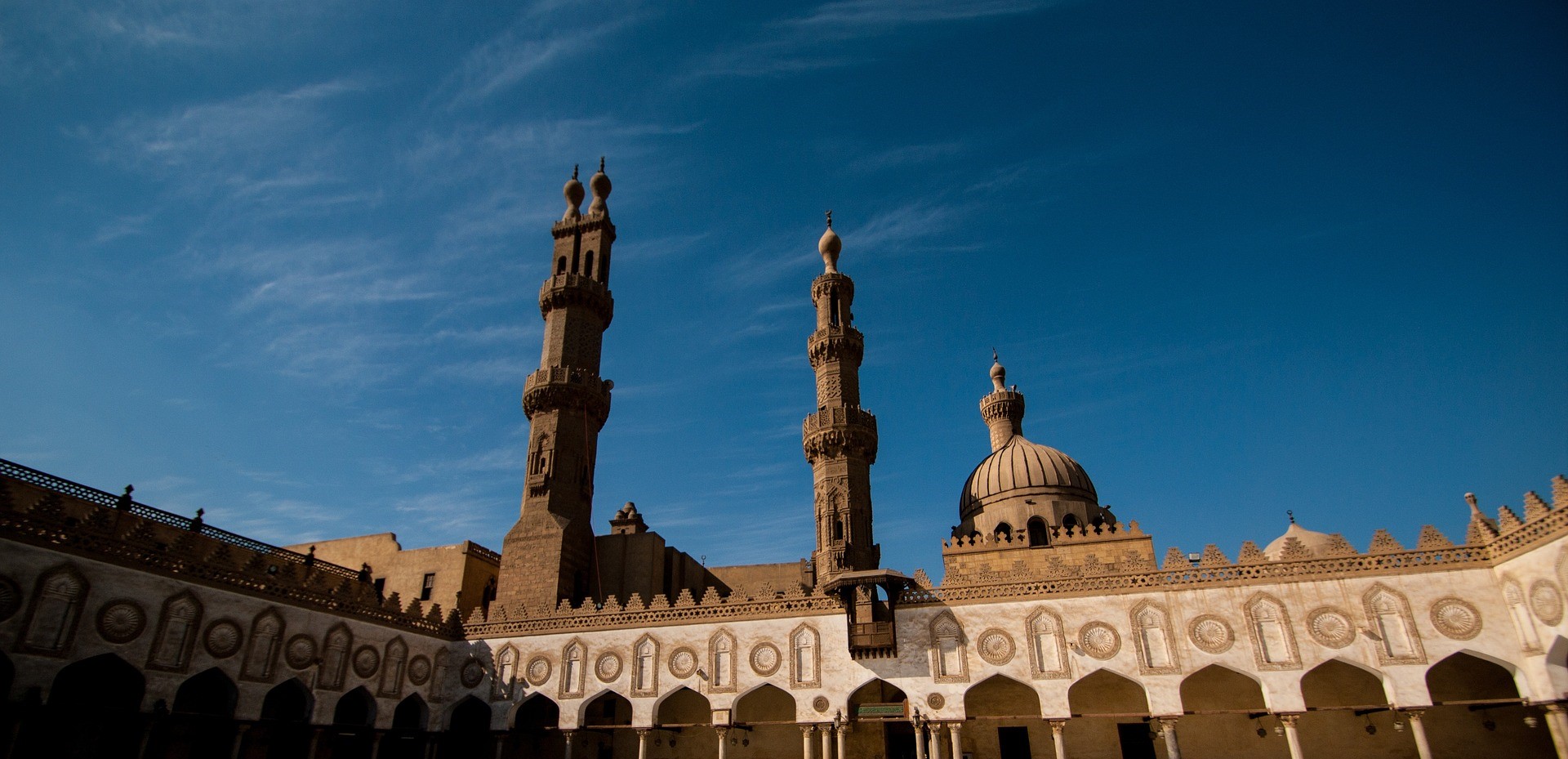
Enclaves of Knowledge
The founding of enclaves for the preservation and advancement of knowledge is a theme that resonates throughout the history of Islam. In its earliest form it was the masjid that served as the nucleus of knowledge. It was here that the Sahabah received their knowledge from Rasulullah sallallahu alayhi wasallam, and it was also primarily in the masjid that they transmitted their knowledge to the following generation. Often the homes of scholars would be the locus for the transmission of knowledge.
Important centres for the dissemination of knowledge during this early period include the Harams of Makkah and Madinah, the Grand Mosque of Kufah, the Umayyad Mosque of Damascus, and the Mosque of Amr ibn al-As in Egypt. To this period, too, belong the “university mosques” of al-Qarawiyyin in Fez (founded 245/859) and al-Azhar in Cairo (founded 359/971).
The madrasah would make its appearance in the late 4th century. The earliest madaris appeared in Nishapur, now in north-eastern Iran. These were structures erected specifically for the transmission of knowledge. Before the end of the following century the perspicacity and munificence of one man would see the establishment of a madrasah in several major cities in the eastern wing of the Muslim lands. He was the illustrious wazir of the Seljuqs, Nizam al-Mulk al-Tusi (died 485/1092).
He founded a Madrasah Nizamiyyah in Baghdad, Balkh, Nishapur, Herat, Isfahan, Basrah, Merv, Amul and Mosul. To the existing idea of a madrasah as a structural edifice Nizam al-Mulk added an important dimension: each madrasah was supported by a waqf, an endowment to support both the students and teachers of his madaris. The celebrated Imam al-Ghazali was one of the earliest pupils of the Nizamiyyah of Nishapur where he studied under the tutelage of Imam al-Haramayn al-Juwayni. He would later go on to become the most distinguished teacher at the Nizamiyyah of Baghdad. The same century saw the establishment of similar madaris by the Murabitun, and later the Muwahhidun, at Fez and Sousse in Morocco, the western wing of the Muslim world.
During the next few centuries the number of madaris increased dramatically. In Baghdad the crowning jewel amongst such institutions was the magnificent Mustansiriya Madrasah built by the Abbasid khalifah al-Mustansir in 625/1227 for the teaching of all four madhahib in addition to the other Islamic disciplines and sciences such as mathematics, biology and medicine.
In Damascus and Cairo the Ayyubids, and then the Mamluks, proved to be very eager patrons of learning. The rulers and their affluent subjects vied with one another in constructing uniquely attractive madaris, and many of these buildings stand in virtually unscathed beauty up to the present day. The names of the men who were the products and teachers at these madaris, and the sheer volume of their contributions to scholarship in Islam provide eloquent testimony to the generous patronage which the Ayyubids and Mamluks extended to the tradition of knowledge: Izz al-Din Ibn Abd al-Salam, Imam al-Nawawi, Taqi al-Din al-Subki, Hafiz Ibn Hajar al-Asqalani, Ibn Kathir, al-Suyuti and many others.
In Cairo there are also al-Madrasah al-Salihiyyah and al-Madrasah al-Mansuriyyah. Al-Madrasah al-Salihiyyah was built by the Ayyubid al-Malik al-Salih in 639/1242. Its first teacher was Izz al-Din Ibn Abd al-Salam. Al-Madrasah al-Mansuriyyah was built by the Mamluk sultan Qalawun in 682/1283. Next to it he constructed a hospital. Taqi al-Din al-Subki taught at this madrasah.
The promotion of knowledge through the founding of madaris continued under the Ottomans. Al-Azhar, which had been closed under the Ayyubids and eclipsed by other madaris under the Mamluks, reclaimed its status as a premier centre of learning. In India the patronage of rulers and governors advanced the cause of scholarship.
When colonialism eventually came to erode the political power of the Muslims, it would be to institutions of knowledge that the Muslims would turn for both leadership and guidance. When Napoleon conquered Egypt and defeated its military rulers in 1213/1798, it was to al-Azhar and its shaykh, Abdullah al-Sharqawi, that the Egyptian people turned for leadership. In India looming threats against Muslim rule, specifically that of the British East India Company, brought Shah Waliyyullah and the ulama of his school, the Madrasah Rahimiyyah in Delhi, into prominence, and when the war of 1273/1857 failed, it would be upon institutions such as Darul Uloom Deoband (founded 1283/1866) and Darul Uloom Nadwatul Ulama in Lucknow (founded 1310/1893) that the role of preserving not just ʿilm, but Islam as a whole, devolved.
This institute sees itself as an heir to such enclaves of knowledge. It is dedicated to preserve and promote ʿilm through imparting a thorough comprehension of traditional disciplines. It is committed at the same time to advancing knowledge and developing our scholarly tradition beyond its present scope in order to meet the challenges of our age.
